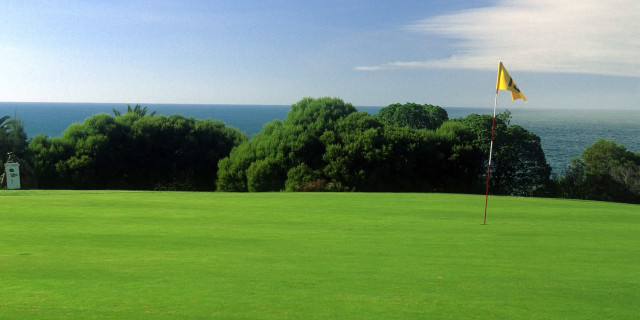Golf’s next potential star may have revealed herself last week: meet Megha Ganne.
The rising senior at Stanford University won the 125th U.S. Women’s Amateur last week at Bandon Dunes in Oregon, joining names such as JoAnne Carner, Beth Daniel, Juli Inkster and Lydia Ko to claim one of golf’s most prestigious titles.
Ganne first picked up a golf club as a child while growing up in New Jersey. But despite getting hooked on the game and becoming the fourth-ranked women’s amateur player in the world with plans to turn professional next year, the 21-year-old tells Sports Illustrated that she doesn’t obsess over golf gear.
Maybe that worry-free mindset helped propel her to win the Robert Cox Trophy last week.
This interview has been edited for length and clarity.
Sports Illustrated: Take me through the clubs in your bag.
Megha Ganne: Made a switch right before the [U.S. Women’s Am] to a different putter, It’s a mallet and I used to have a line that just goes halfway and then I switched to the line that goes all the way through the putter because I have a straighter stroke, so I was just seeing it better. I really liked the way it made me feel over mid-length putts, which is something that I’ve been working on to increase my percentage of putts I make from, like 6 to 20 feet. I’m not sure if that’s exactly what moved the needle, but the putter change definitely did help.
And then I play MG4 wedges and I have 58, 54, and then a 48 [degree wedge], which is kind of abnormal. It’s a little bit of a disadvantage around the greens, because I think I’d prefer to have a 50 degree, but that longer shot from 90 to 110 yards, which I actually used a lot [at Bandon Dunes], the 48 is like the perfect club cause you don’t have to feel like you’re stepping on something and I also don’t have to hit a baby pitching wedge as much. I feel like I have a really good club for those yardages.
Then I have P770s as my irons. And I loved the 7-wood I had in the bag, but I took it out because you need low shots for Bandon, so I replaced it with a 3-hybrid.
SI: What’s your favorite club in the bag?
MG: I’d go putter, and anything with my low irons I’m really good with.
SI: What clubs specifically do you think powered your semifinal comeback at the Amateur, in which you were four holes down with seven left to play?
MG: I’m really comfortable hitting knockdowns, like just straight ball knockdowns with no turn with my 7, 6, 5, and 4 iron, and I noticed that’s actually a shot that not a lot of competitors that I played this week had, and it’s something that you 100% need on the back nine at Bandon, which is where my comeback started from. Having that shot in the bag and being so comfortable with it under pressure, which you just needed, I think gave me an edge.
SI: Do you have any gear or equipment superstitions?
MG: No, nothing. I’m anti-superstition.
SI: Do you remember the first club you ever owned and who gave it to you?
MG: It was probably those plastic golf clubs that they get little kids from my dad.
SI: Have you ever received any advice from LPGA Tour pros, perhaps regarding anything equipment-focused?
MG: Not on the LPGA, but TaylorMade, their reps come to a lot of the big events that we have and they’re just so knowledgeable about what they’re doing and them watching me play golf over the years, they have a good eye for any small changes that maybe I can’t notice or something that’s not as efficient as it could be.
Just checking in with them multiple times a year and they pick up on stuff that maybe you don’t from a player’s perspective, is really cool.
SI: What’s the best golf advice you’ve ever gotten?
MG: All of my favorite advice is usually centered around trying to make golf as simple as possible. It’s really easy to get caught up into trying to over-analyze or criticize yourself, which is just not an efficient way to post a low score or win a golf tournament. Leave the analysis for after and just be a player on the golf course. Don’t be some sort of analyst or coach while you’re playing golf.
I think learning to just go play golf a lot, not just sit on the driving range or putting green, but go play, learn how to be a player, learn how to get the ball in the hole. I know that’s basic, but I feel like it’s a really big deal.
SI: Is that what you would tell someone who is just starting to play the game?
MG: I think you need to hit that learning curve of getting your technical foundation down, but nothing’s going to make you play better than getting out on the course and learning how to get the ball in the hole faster. Golf is not a game of perfect, and the sooner you learn that, the happier you’re going to be with your poor shots, because there’s no pictures on the scorecard.







